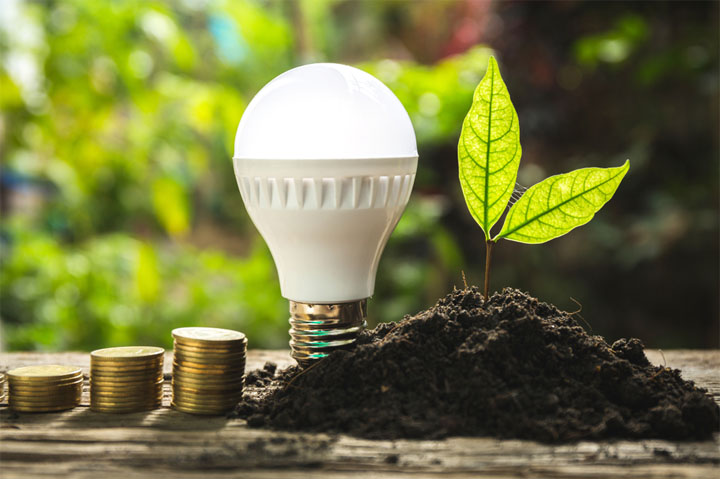Sustainability October 25, 2022
3 Easy Ways to Reduce Your Company’s Energy Use
Making sustainable changes to your business requires a mindset shift, but in addition to being better for the planet, it can also often save you money.
Oftentimes, the conversation around climate change can feel overwhelming, with much of the research pointing toward an issue too vast and complex to wrap our minds around one clear solution. What we do know is that our manufacturing processes have a large impact, a fact that’s backed up by sobering stats: Currently, the fashion industry accounts for anywhere from 2% to 8% of the world’s greenhouse gas emissions, according to the United Nations Alliance for Sustainable Fashion. And that’s just a portion of what our promo tentacles touch.

While we must hold large corporations accountable and ask for policy change, there are dozens of ways for individuals and businesses to contribute to a lesser carbon footprint by making small adjustments to daily habits and processes.
Here are three ways to reduce energy use in your business:
1. Use smart technology and timers. Optimize appliances such as computers, printers and decoration equipment by connecting them to apps that have sleep and energy conservation modes, plus the option to turn them completely off at the end of each day. In spaces where there’s sporadic foot traffic like bathrooms, kitchens and meeting rooms, consider installing motion sensors so the lights remain off unless someone is using the room. Smart thermostats for your offices and warehouses will also cut costs substantially and prevent HVAC systems from sucking energy when they don’t need to.
2. Leverage natural light. Depending on the weather in your area, allowing natural light into the office is an easy way to cut down on the electricity bill. If you’re moving locations, designing a new office building or revamping your current space, consider consulting a sustainable architect who can educate you on installing windows, skylights and other features appropriate for the amount of light you need to supplement your electric lighting during work hours. Daylight even helps heat spaces naturally – for free! – and is linked to greater employee satisfaction and improved productivity, according to the National Sleep Foundation.
3. Switch to laptops. By design, laptops are much more energy efficient than PCs: Some statistics report that laptops can use up to 80% less power than desktops, getting by on battery power for a portion of their use, which saves on electricity. Depending on the model, a laptop uses between 50 to 100 watt-hours when in use, while a desktop uses an average of 170 watt-hours when in use. It could be wise to invest in laptops for your in-house employees such as sales, graphic designers and administrative staff to save energy in the long run. Pair a laptop with a wireless keyboard and standing desk to encourage healthy posture if the laptop monitors end up smaller than the desktop computers.
Saving energy begins with a mindset shift, a commitment to learning new ways of conducting business, even if that means straying from how you’ve always done things. Because of the need for smart, sustainable solutions, there are many companies that specialize in integrative design and energy efficient options that will help you build on these ideas.

Promo for the Planet is your destination for the latest news, biggest trends and best ideas to help build a more sustainable and socially-responsible industry.
